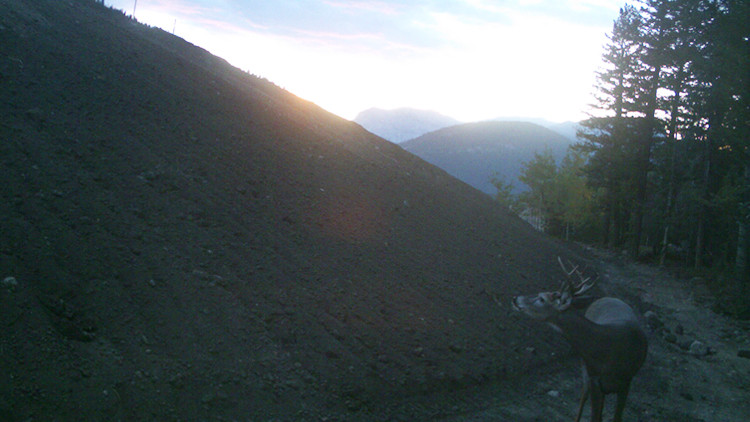A new wildlife crossing is nearly finished
and animals are already being saved
After almost two decades of researching, planning, fundraising and building, a new wildlife overpass is nearly complete — and already in use!
The Bow Valley Gap wildlife overpass (known as the Stoney Nakoda Exshaw wildlife arch) is Alberta’s first wildlife overpass constructed outside a national park. It took the dedication and belief of our partners, biologists, transport experts, Indigenous communities, and supporters like you to make this project a reality.
In 2019, after a decade of research and advocacy, our Y2Y community helped get the Alberta Government to fund a wildlife overpass across one of the busiest stretches of the Trans-Canada Highway, about 37 kilometers (23 miles) east of Banff National Park.
The “Bow Valley Gap” is known by the Ĩyãħé Nakoda (Stoney Nakoda) Nations as “the place where animals cross forever.” It’s also known for its high rate of wildlife-vehicle collisions — on average 69 collisions occur per year, costing around $750,000 CAD, annually.
Now, the deer, elk, coyotes, grizzly bears and humans who travel this route will have safer passage.
While construction is not entirely finished, wildlife cameras show animals are already using the wildlife arch to cross over the deadly Bow Valley Gap.
It’s only because of supporters like you, who advocate for wildlife year after year, that massive conservation projects like this can be built.

Thank you for helping “bridge the gap” to keep wildlife and people safer
The research on wildlife crossing structures is clear: animals are 2.46 times more likely to use a designated structure to cross a busy highway than crossing randomly. Collisions go down. Lives are saved.
With the Bow Valley Gap overpass, wildlife are using this safe passageway — even before the construction is complete!
Supporters like you have been a driving force behind the dozens of crossing structures built in the area to date. Because of you, more elk, bears, moose, cougars and other precious wildlife are safer when crossing dangerous and deadly highways. You’re making roads safer for humans, too.
This is great news — and yet our work is not done.
There are more high-collision hotspots throughout the Yellowstone to Yukon region.
Thanks to your generosity, we’re bringing together wildlife biologists, community partners and government agencies to identify and plan an additional 40 wildlife crossings and fencing projects in the region.
Our focus right now is on Highway 3 in British Columbia and Alberta, and Interstate 90 in Wyoming, Montana and Idaho. These two highways are like massive walls blocking wildlife movement and migration.
Without more crossing structures on these two highways the vision of a reconnected landscape will not be achieved. There is a strong willingness among our partners right now to invest time, energy and money into these massive infrastructure projects.
That’s why we need you to continue to champion these projects; we can’t lose momentum.
A donation to Y2Y can help provide safe passage for wildlife, and “bridge the gap” across deadly stretches of highway. Your ongoing support ensures these life-saving projects will move forward, before it’s too late. Thank you.


